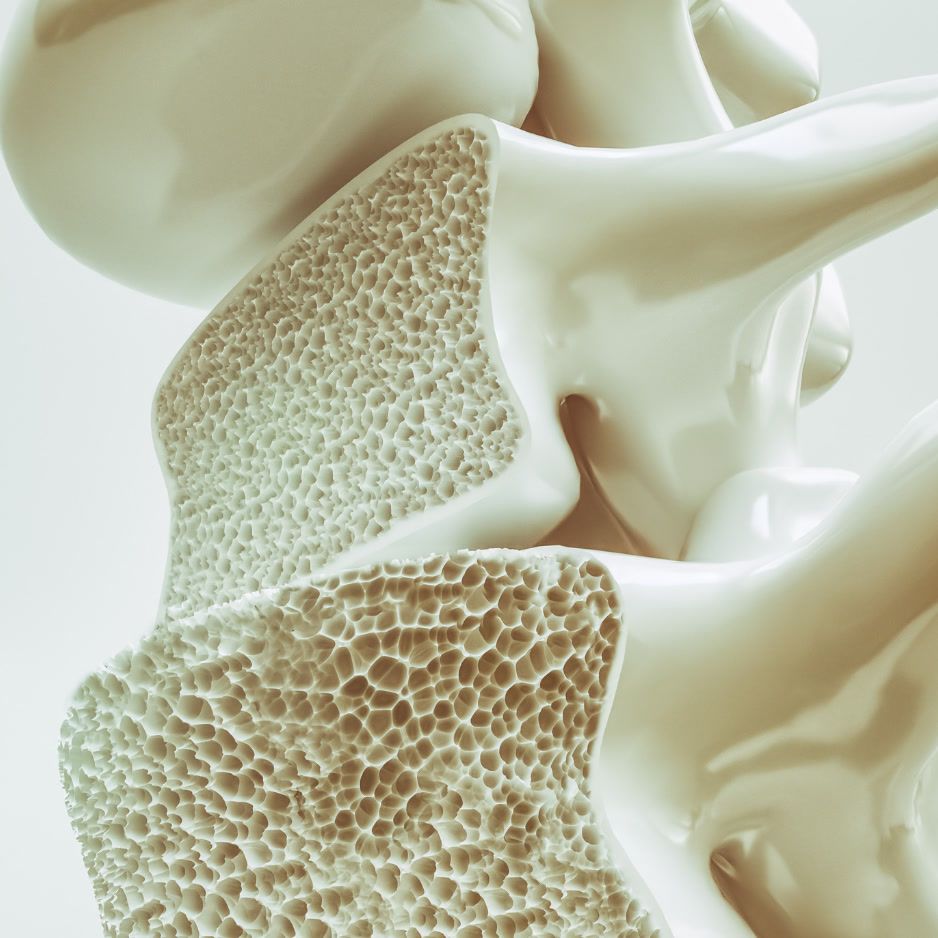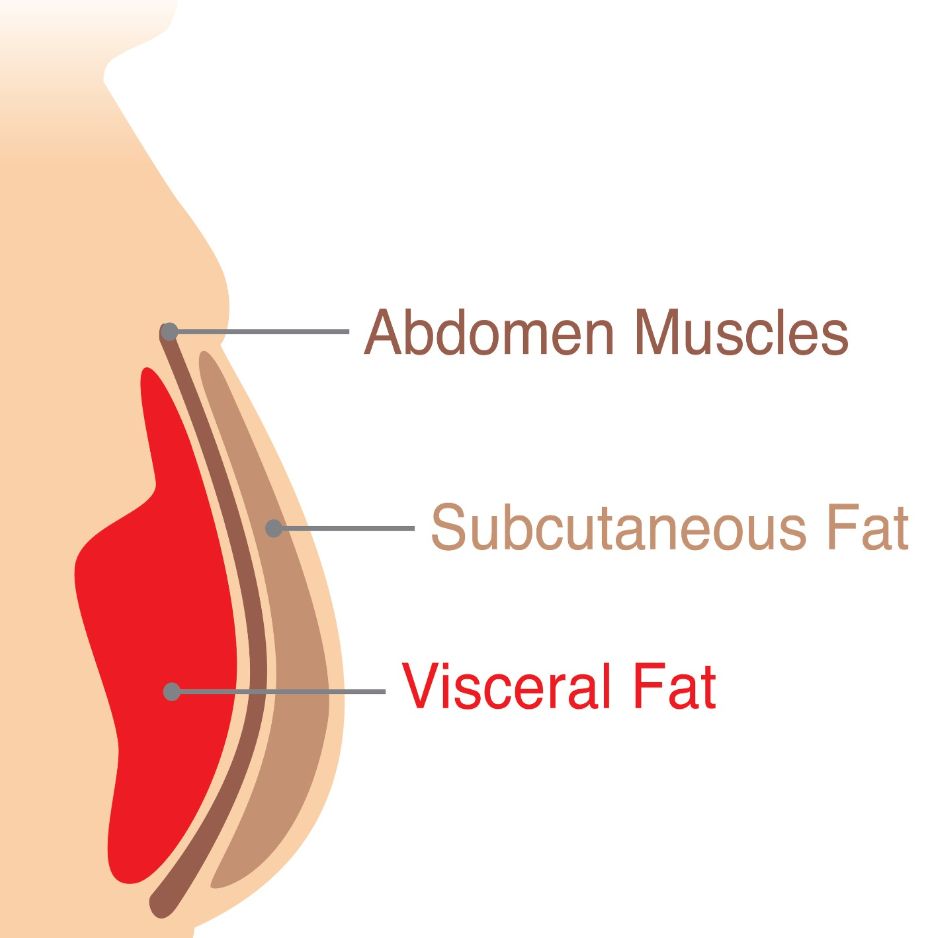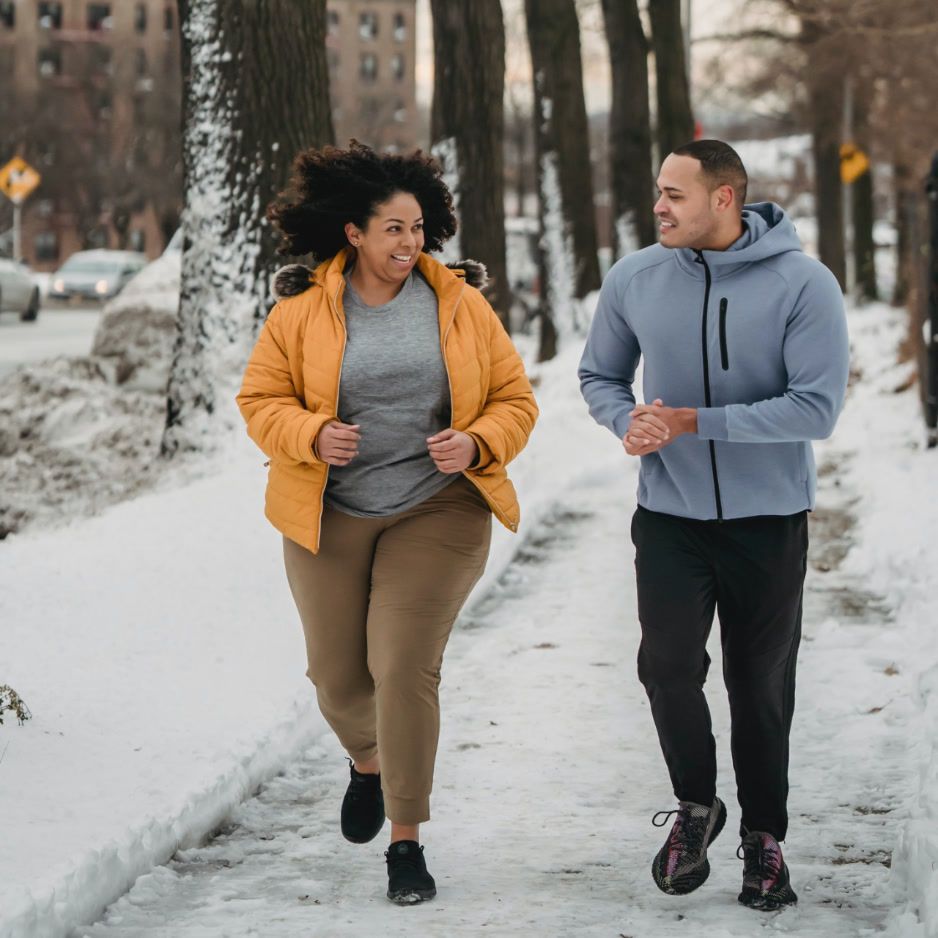Low-Impact Cardio: Complete Guide for Every Fitness Level
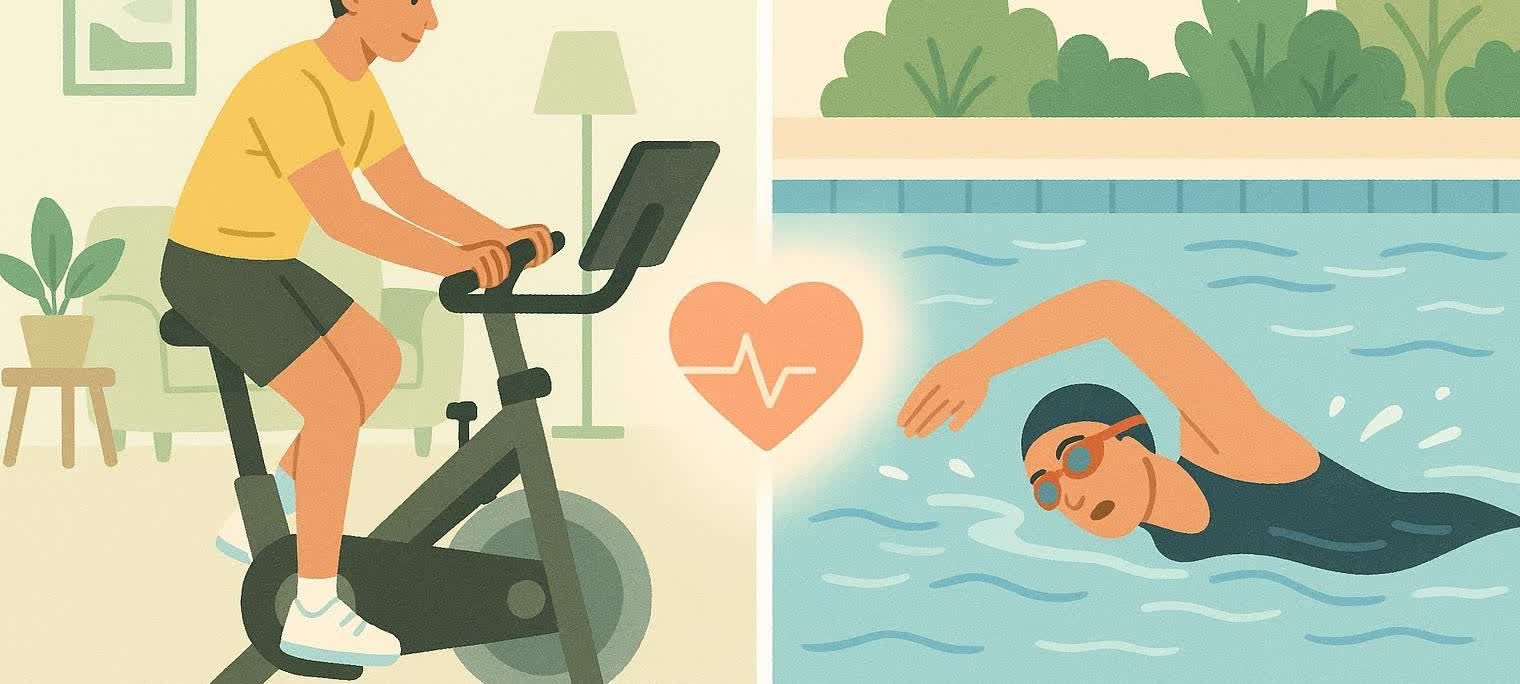
Low-Impact Cardio: Complete Guide for All Fitness Levels
Whether you're nursing creaky knees, living in a paper-thin apartment, or simply want effective cardio without the joint-pounding assault of high-impact exercise, low-impact cardio is your fitness secret weapon. Think of it as the diplomatic solution to cardiovascular training—it gets your heart pumping and calories burning without declaring war on your joints.
Far from being "cardio lite," low-impact exercise can be just as challenging and effective as traditional high-impact workouts. Low-impact exercises can provide substantial cardiovascular benefits while significantly reducing injury risk, according to UCLA Health. The key difference lies not in intensity, but in how forces are distributed throughout your body.
This comprehensive guide will help you discover the perfect low-impact cardio routine for your lifestyle, fitness level, and goals—whether you're a beginner taking your first steps or an athlete seeking active recovery alternatives.
What Is Low-Impact Cardio?
Low-impact cardio refers to cardiovascular exercise where at least one foot remains in contact with the ground at all times, minimizing the jarring forces transmitted through your joints. This type of exercise places less stress on joints, particularly the ankles, knees, hips, and spine, while still providing significant cardiovascular and metabolic benefits, notes Hinge Health.
Key characteristics of low-impact cardio:
- At least one foot stays grounded during movement
- Reduced gravitational forces on joints
- Controlled, flowing movements
- Can still achieve high intensity without high impact
Important distinction: Low-impact doesn't mean low-intensity. You can achieve vigorous cardiovascular training through low-impact methods—the difference is simply how your body absorbs force during exercise.
Low-Impact vs. High-Impact Exercise
High-Impact Examples:
- Running and jogging
- Jumping jacks
- Plyometric exercises
- Traditional aerobics classes
Low-Impact Alternatives:
- Walking and power walking
- Swimming and water aerobics
- Cycling and stationary bikes
- Elliptical machines
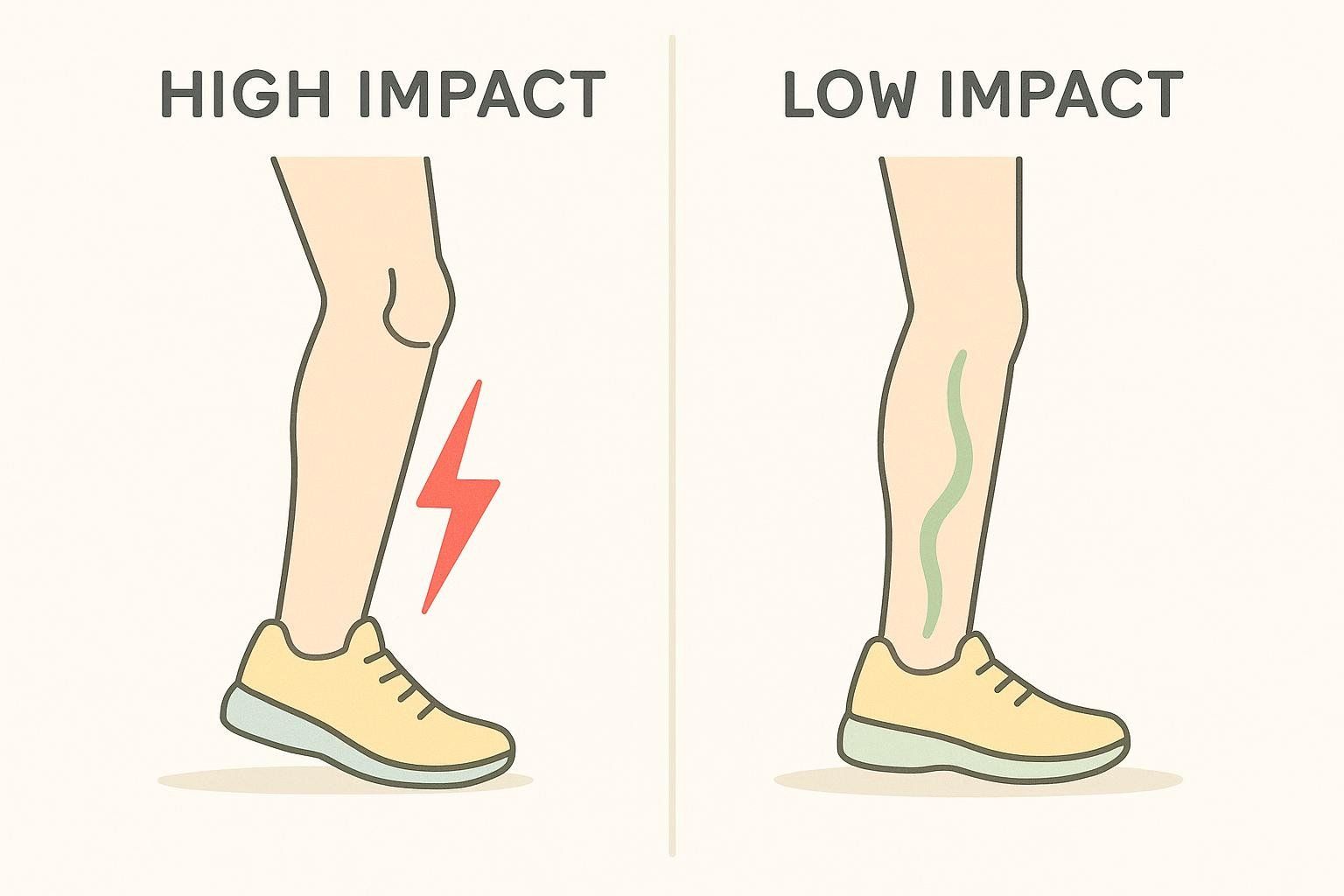
The beauty of low-impact cardio lies in its accessibility—it allows people of all fitness levels and physical conditions to engage in effective cardiovascular training without excessive joint stress.
The Science-Backed Benefits of Low-Impact Cardio
Cardiovascular Health Improvements
Low-impact cardio provides substantial cardiovascular benefits, including decreased risk of heart disease, stroke, cancer, type 2 diabetes, obesity, and hypertension, as documented in sports medicine research. The key is achieving and maintaining an elevated heart rate, regardless of impact level.
Cardiovascular benefits include:
- Improved heart muscle strength
- Enhanced circulatory efficiency
- Better blood pressure regulation
- Increased HDL (good) cholesterol levels
Joint Health and Injury Prevention
One of the most significant advantages of low-impact cardio is its protective effect on joint health. Low-impact exercise strengthens muscles around joints, improving range of motion, mobility, and flexibility while decreasing musculoskeletal pain, according to physical therapy experts.
Joint benefits include:
- Reduced wear and tear on cartilage
- Strengthened supportive musculature
- Improved joint lubrication
- Enhanced proprioception and balance
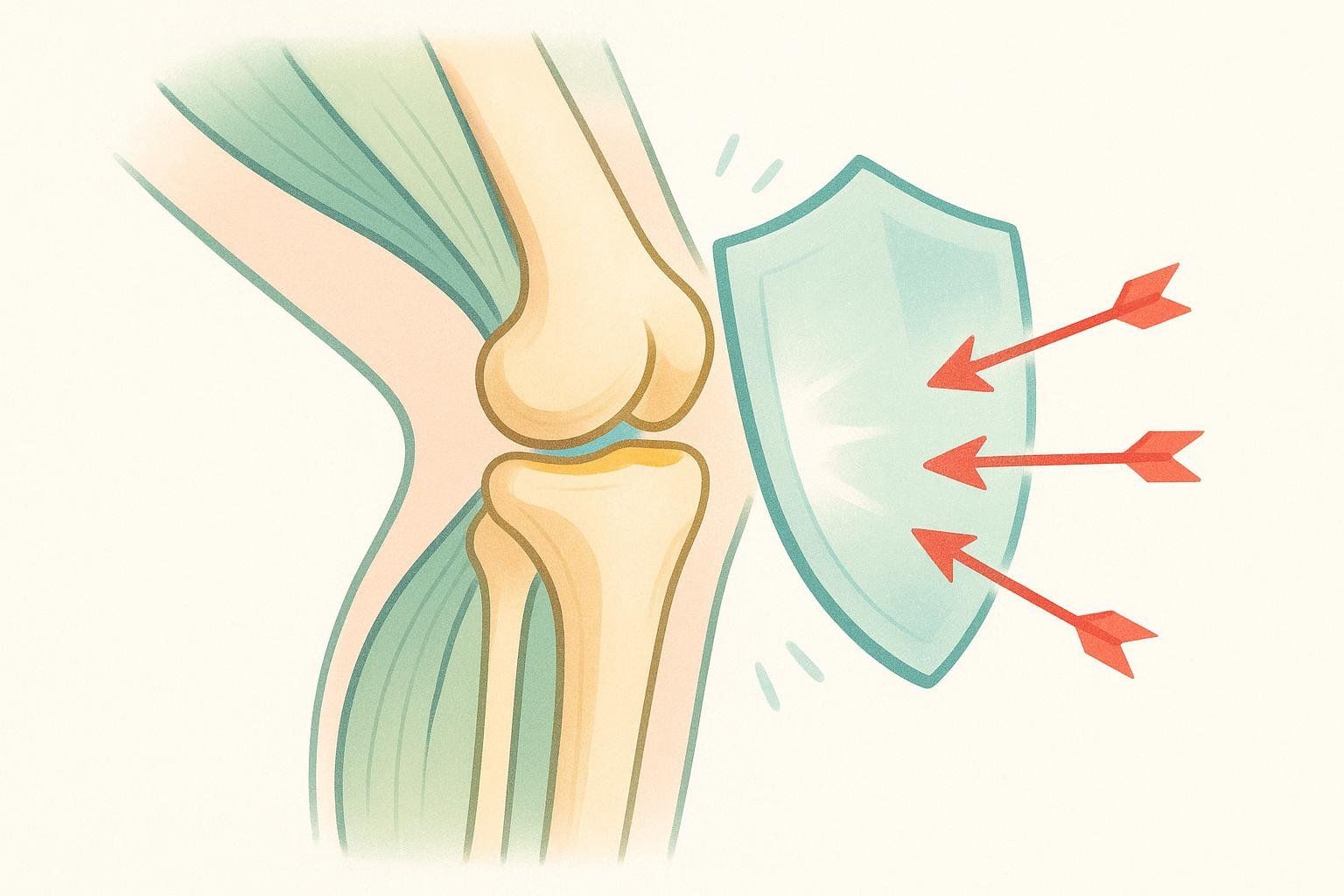
Mental Health and Mood Enhancement
Low-impact cardio offers significant mental health benefits by boosting mood, reducing stress and anxiety, and enhancing cognitive function. Regular low-impact exercise triggers endorphin release while providing a sustainable form of stress relief that can be maintained long-term without the injury concerns of high-impact activities.
Weight Management and Body Composition
Despite being "low-impact," these exercises are highly effective for weight management and body composition improvements. Low-impact cardio provides an effective tool for weight management when performed consistently and with appropriate intensity, studies demonstrate.
Who Benefits Most from Low-Impact Cardio?
Beginners and Exercise Newcomers
If you're new to exercise or returning after a long break, low-impact cardio provides an ideal entry point. The reduced injury risk allows you to build cardiovascular fitness and confidence without fear of overwhelming your body.
Perfect for beginners because:
- Lower risk of injury or excessive soreness
- Easier to maintain proper form
- More sustainable for building long-term habits
- Less intimidating than high-impact alternatives
Individuals with Joint Pain or Arthritis
For people managing arthritis, previous injuries, or chronic joint pain, low-impact cardio can be transformative. Appropriate low-impact exercise can actually reduce joint pain by strengthening supportive muscles and improving joint mobility, medical research confirms.
Key benefits for joint concerns:
- Reduced inflammatory response
- Strengthened surrounding musculature
- Improved joint lubrication and mobility
- Pain management through endorphin release
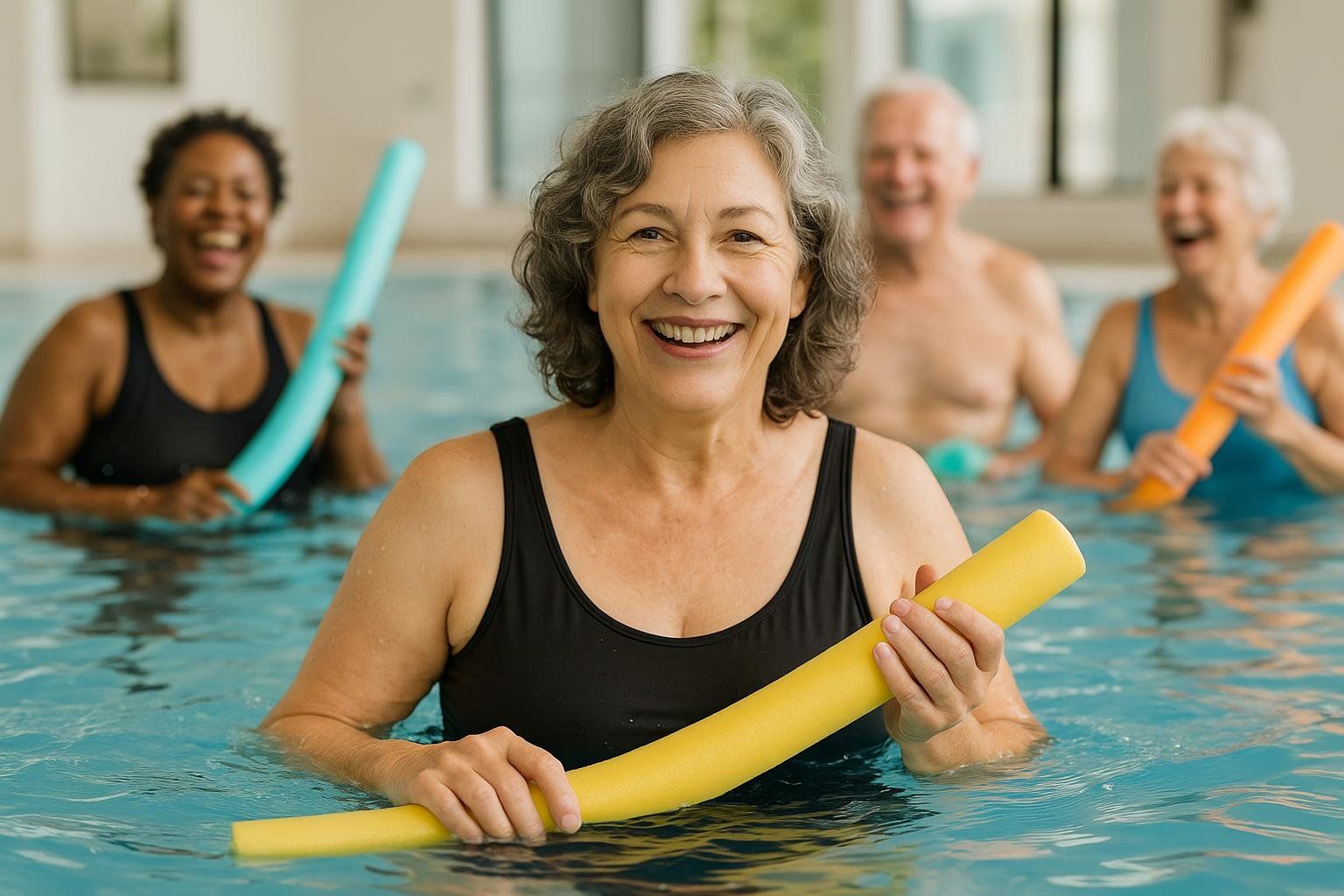
Modifications for Arthritis and Joint Conditions
- Begin with shorter durations (10-15 minutes)
- Use heat therapy before exercise if helpful
- Focus on range of motion exercises
- Pool exercises often provide significant relief
Athletes and Active Recovery
Even elite athletes incorporate low-impact cardio into their training regimens. Low-impact exercise improves cardio conditioning, coordination, and balance while supporting recovery between high-intensity sessions, fitness professionals recognize.
Apartment Dwellers and Space-Constrained Exercisers
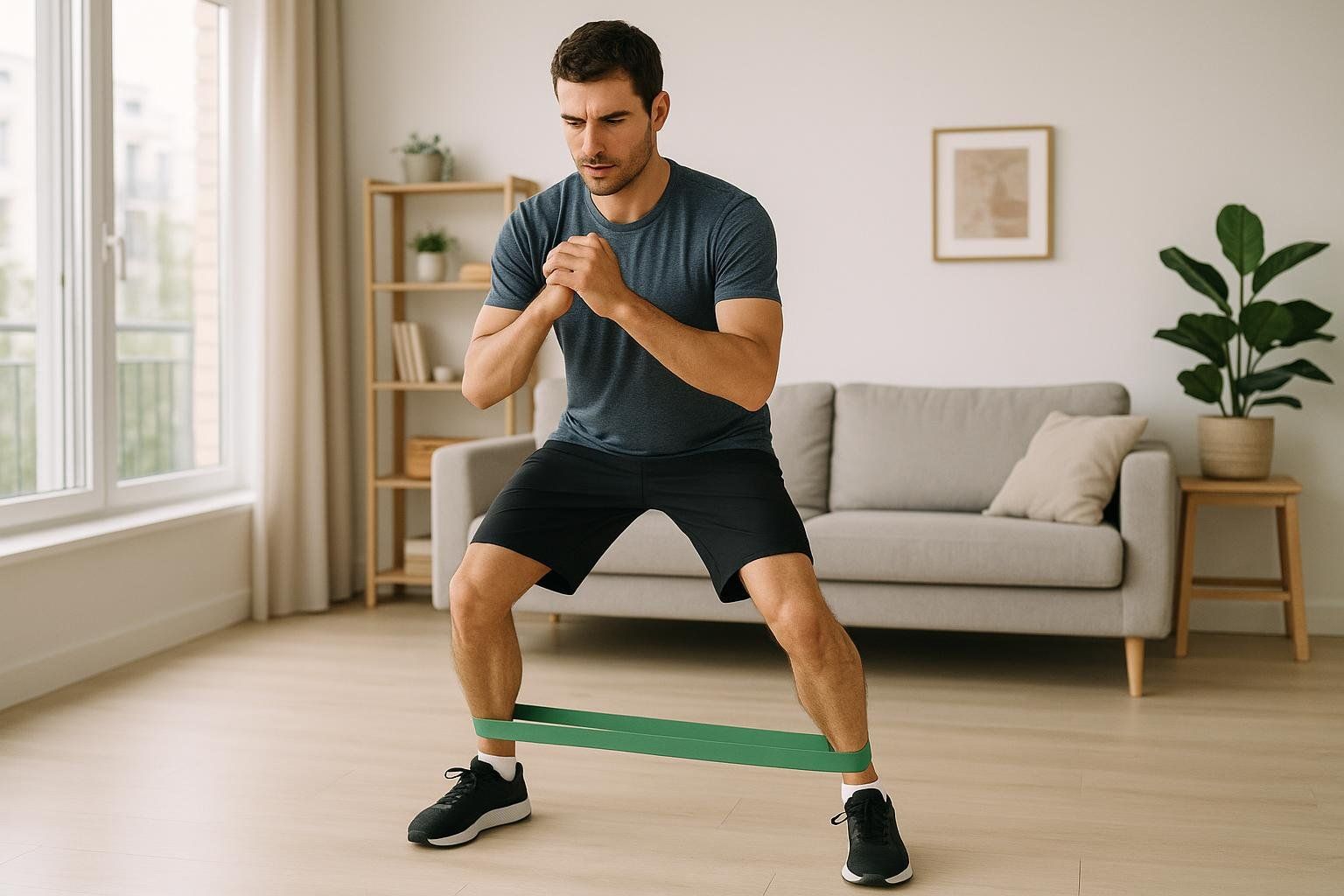
Living in close quarters doesn't mean sacrificing fitness. Low-impact exercises are ideal solutions for small spaces and noise-sensitive environments, making workout consistency easier to maintain in urban living situations.
Older Adults
As we age, maintaining cardiovascular health becomes increasingly important while injury risk factors increase. Low-impact cardio provides the perfect solution for staying active without compromising joint health or increasing fall risk.
Considerations for Older Adults
- Start slowly and progress gradually
- Focus on functional movements (sit-to-stand, walking patterns)
- Use supportive equipment when needed (handrails, chairs)
- Emphasize balance and fall prevention components
Special Populations
Guidelines for Pregnant Women
- Obtain prenatal clearance from healthcare providers
- Stay hydrated and avoid overheating
- Modify exercises as pregnancy progresses
- Swimming is often excellent throughout pregnancy
Adaptations for Limited Mobility
- Many exercises can be modified for seated positions
- Focus on upper body movements and circulation
- Chair-based options include arm cycling and seated marching
- Resistance bands provide additional challenge
16 Best Low-Impact Cardio Exercises
Water-Based Exercises
1. Swimming
Swimming engages your entire body while water buoyancy eliminates joint stress completely. Benefits include:
- Zero joint impact due to water buoyancy
- Full-body muscle engagement
- Improved flexibility and coordination
- Excellent calorie burn potential
Those dealing with injury recovery or joint problems will find this particularly beneficial.
2. Water Aerobics
Water aerobics combines structured cardiovascular movements with joint-friendly water support. Key features:
- Social exercise environment
- Customizable intensity levels
- Natural resistance training from water
- Temperature-controlled workout space
Seniors and those in rehabilitation programs often gravitate toward this supportive community-based option.
Machine-Based Low-Impact Cardio
3. Elliptical Machine
The elliptical recreates running motion without impact on your joints. Features include:
- Upper and lower body engagement
- Adjustable resistance and incline settings
- Reverse pedaling option for muscle variety
- Natural running motion without impact
This makes it a popular choice among gym-goers and those with knee concerns.
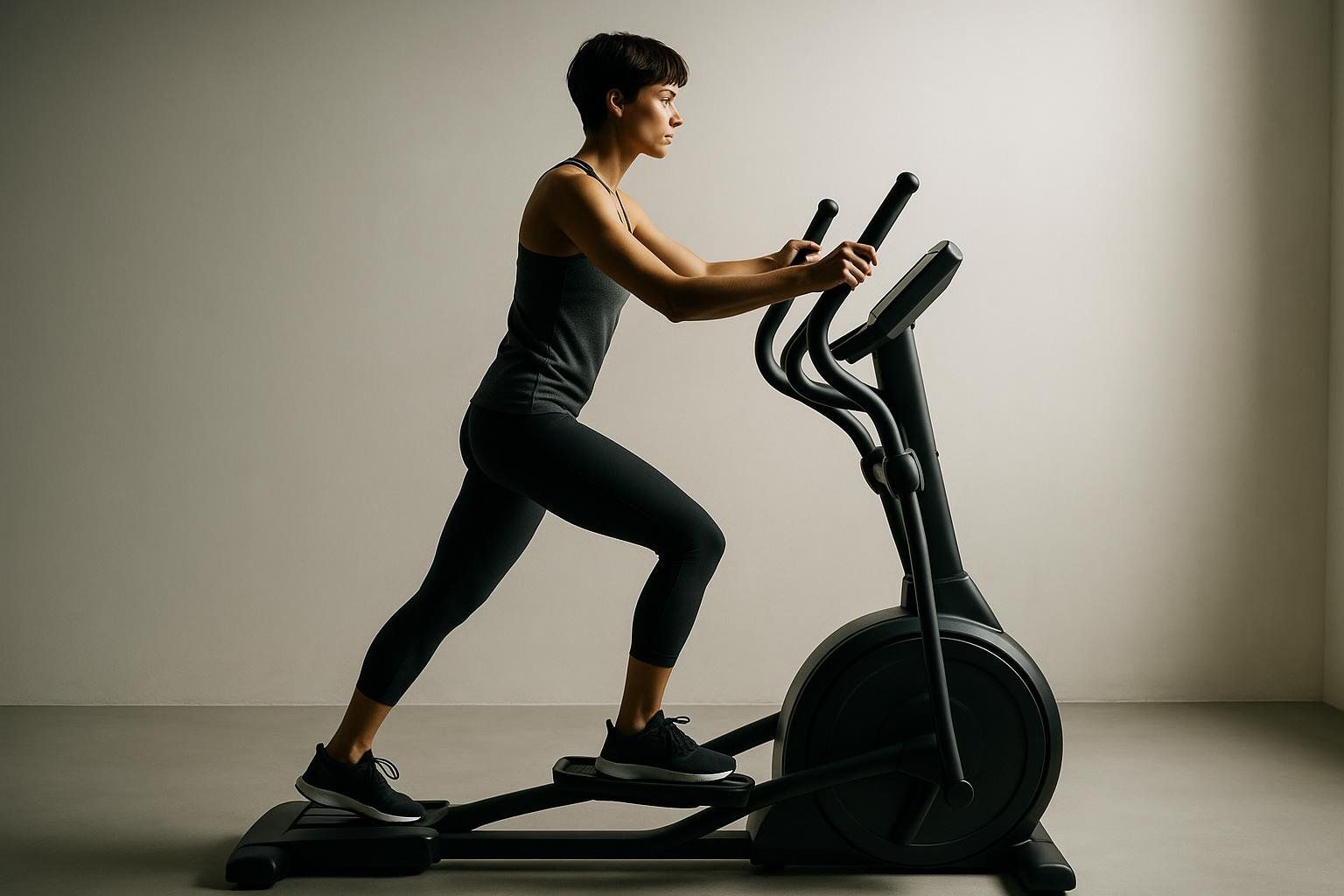
4. Stationary Cycling
Both upright and recumbent bikes offer excellent cardiovascular training with minimal joint stress. Cycling can improve aerobic capacity, blood pressure, and body composition. Primary advantages:
- Highly customizable intensity
- Weather-independent training
- Lower back support (recumbent bikes)
- Measurable progress tracking
5. Rowing Machine
Rowing provides total-body engagement in a single fluid movement. Key advantages:
- Combines cardiovascular and strength training
- Excellent calorie burn potential
- Improves posture and core strength
- Low learning curve
This efficiency appeals to those seeking comprehensive workouts in minimal time.
Walking and Step-Based Exercises
6. Brisk Walking
Walking is the foundation of low-impact cardio—accessible, free, and infinitely adaptable. Benefits include:
- Requires no equipment or gym membership
- Easily adjustable intensity
- Opportunities for social connection
- Can be done anywhere, anytime
It serves as both an excellent starting point for beginners and a valuable staple throughout any fitness journey.
7. Incline Walking (Treadmill or Hills)
Adding incline dramatically increases cardiovascular challenge while maintaining walking's low-impact nature. Key features:
- Significantly increased calorie burn
- Enhanced lower body strengthening
- Outdoor hiking simulation
- Improved cardiovascular fitness
Those seeking progression without additional joint stress often find this particularly effective.
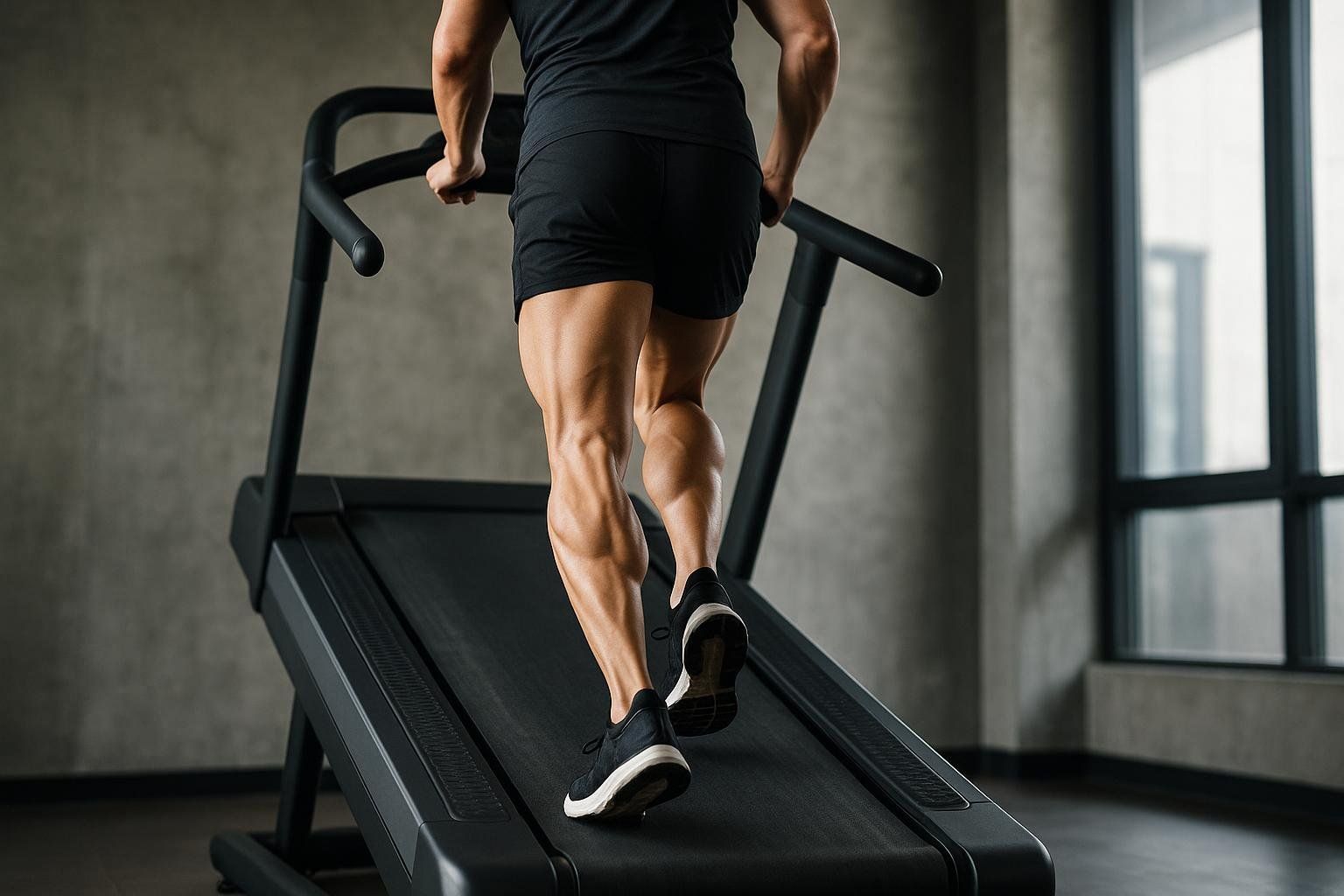
8. Step-Ups
Step-ups use stairs, platforms, or boxes to build cardiovascular fitness and lower body strength through functional movements. Features:
- Minimal equipment required
- Unilateral training benefits
- Easily scalable difficulty
- Functional movement pattern
Home exercisers appreciate the simplicity and functional benefits.
Low-Impact HIIT and Circuit Training
9. No-Jump HIIT Workouts
High-intensity interval training adapted for low-impact by removing jumping movements. Key benefits:
- Time-efficient calorie burning
- Maintains HIIT metabolic benefits
- Apartment and joint-friendly
- Highly customizable exercises
Busy individuals with joint concerns find this combination particularly appealing.
10. Circuit Training with Bodyweight Movements
Circuit training combines exercises like squats, lunges, and modified push-ups in rapid succession. Primary features:
- Full-body engagement
- Combined strength and cardio training
- No equipment required
- Infinite exercise variations
Home exercisers appreciate the equipment-free efficiency.
Dance and Movement-Based Exercises
11. Dance Cardio (Low-Impact Styles)
From gentle Zumba to ballroom dancing, dance-based cardio emphasizes enjoyment while providing cardiovascular benefits. Key benefits:
- High entertainment value
- Improved coordination and balance
- Social exercise opportunities
- Cultural and artistic expression
Many people who find traditional cardio monotonous discover dance transforms their entire relationship with exercise.
12. Tai Chi
This ancient practice combines slow, flowing movements with deep breathing for gentle cardiovascular exercise. Benefits include:
- Stress reduction and mindfulness
- Improved balance and coordination
- Very low injury risk
- Enhanced mind-body connection
Those seeking both physical and mental wellness benefits often find this practice particularly rewarding.
Core and Flexibility-Enhanced Cardio
13. Yoga Flow Classes
Dynamic yoga styles like Vinyasa provide cardiovascular challenge through continuous movement while improving flexibility, balance, and core strength. Primary advantages:
- Combination of flexibility and strength training
- Stress reduction and mindfulness components
- Improved balance and coordination
- Spiritual/mental health component
Those seeking comprehensive mind-body fitness often find this addresses multiple wellness goals simultaneously.
14. Pilates-Based Cardio
Pilates exercises performed rapidly or with minimal rest provide cardiovascular challenge while emphasizing core strength and stability. Key features:
- Core strengthening emphasis
- Improved posture and stability
- Mind-body connection development
- Excellent for rehabilitation
This approach particularly benefits those dealing with core weakness or posture-related issues.
15. Seated Cardio Workouts
Chair-based cardio exercises provide effective cardiovascular training for those with mobility limitations or seeking gentler alternatives. Benefits include:
- Accessible for most fitness levels
- Can be done anywhere with a chair
- Upper body and core engagement
- Adaptable for various conditions
Features seated versions of traditional exercises like arm cycling, chair dancing, and upper body circuits.
Outdoor and Recreational Activities
16. Hiking (Easy to Moderate Trails)
Nature-based cardiovascular exercise combines walking benefits with varied terrain and fresh air. Key advantages:
- Natural stress relief and mood enhancement
- Variable difficulty levels
- Vitamin D exposure
- Connection with nature
Outdoor enthusiasts often find this offers both physical and psychological benefits that indoor activities simply cannot match.
Low-Impact HIIT: Maximum Results, Minimum Impact
High-Intensity Interval Training doesn't require jumping or high-impact movements to be effective. Low-impact HIIT maintains the metabolic benefits of traditional HIIT while protecting your joints.
The Science Behind Low-Impact HIIT
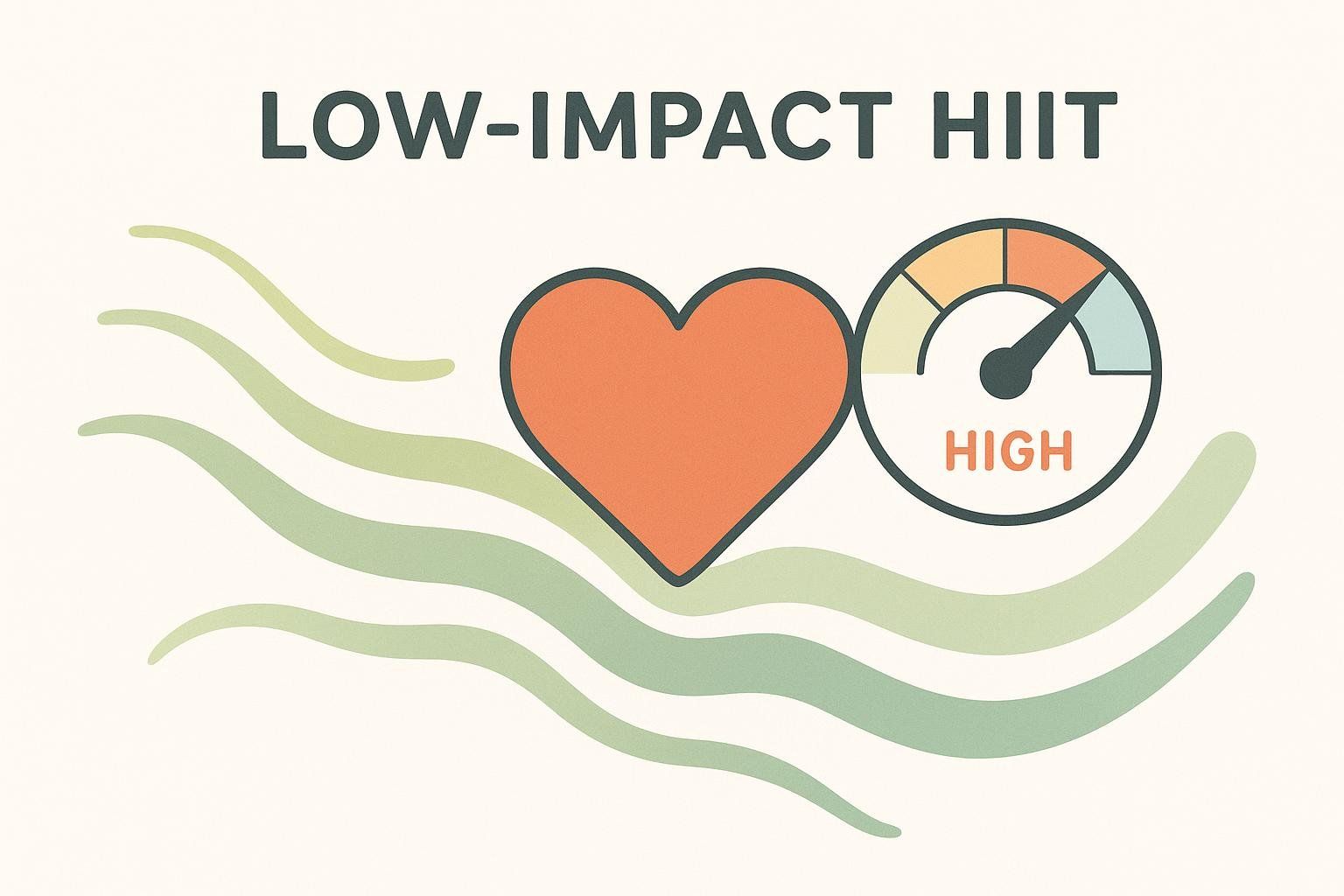
Low-impact modifications can provide similar cardiovascular and metabolic benefits to traditional HIIT protocols by maintaining intensity through increased pace, resistance, or range of motion rather than impact. The key lies in challenging your cardiovascular system while respecting joint limitations.
Sample Low-Impact HIIT Workout (20 Minutes)
Warm-up (3 minutes):
- 1 minute marching in place + arm swings
- 1 minute modified jumping jacks (step side to side)
- 1 minute light bodyweight squats
Main Set (14 minutes):
Perform the following 8-exercise circuit twice. For each exercise, work for 45 seconds and rest for 15 seconds.
Circuit Exercises:
- High knees (controlled pace)
- Squat pulses
- Modified mountain climbers (one foot down)
- Alternating reverse lunges
- Side steps with arm raises
- Glute bridges (rapid tempo)
- Wall or incline push-ups
- Standing marching abs
Cool-down (3 minutes):
- Walking in place with deep breathing
- Upper body stretches
- Lower body stretches
Modifications for Different Populations
For Seniors:
- Reduce work intervals to 30 seconds
- Increase rest periods to 30 seconds
- Use chair support for balance exercises
- Focus on controlled movements
For Joint Issues:
- Perform seated versions of standing exercises
- Use resistance bands for added challenge
- Focus on upper body movements
- Emphasize stretching in cool-down
For Small Spaces:
- Choose stationary exercises
- Use vertical movements (arm raises, marches)
- Incorporate isometric holds
- Focus on core and upper body movements
Apartment-Friendly Low-Impact Cardio
Living in close quarters doesn't mean sacrificing your fitness goals. Apartment-friendly workouts can be designed to deliver effective results without disturbing neighbors.
15-Minute Morning Energy Booster
Perfect for starting your day without disturbing neighbors:
Minutes 1-3: Gentle Wake-up
- Arm circles (forward and backward)
- Side bends
- Shoulder rolls
- Gentle neck stretches
Minutes 4-8: Low-Impact Cardio
- Step touches with arm swings
- Modified jumping jacks (step side to side)
- Marching in place with high knees
- Side steps with arm reaches
Minutes 9-12: Strength-Cardio Fusion
- Bodyweight squats (slow and controlled)
- Wall push-ups
- Standing glute squeezes
- Calf raises
Minutes 13-15: Recovery and Stretch
- Deep breathing exercises
- Gentle spinal twists
- Standing forward fold
- Standing quad stretch
25-Minute Evening Stress Relief
Designed to help you unwind while getting movement:
Minutes 1-5: Transition from Day
- Slow walking in place
- Progressive muscle relaxation
- Deep breathing exercises
- Gentle joint mobility
Minutes 6-15: Low-Intensity Cardio Flow
- Tai Chi-style movements
- Standing figure-8 patterns
- Gentle dance movements
- Flow between standing poses
Minutes 16-20: Restorative Strength
- Isometric squats (hold for 15 seconds)
- Wall sits
- Standing bird dog
- Single-leg balance holds
Minutes 21-25: Wind-Down
- Seated spinal twists
- Neck and shoulder stretches
- Breathing exercises
- Peaceful meditation
Noise Considerations for Apartment Dwellers
Sound-Minimizing Strategies:
- Use carpeted areas or exercise mats
- Avoid jumping or rapid direction changes
- Choose flowing movements over sharp stops/starts
- Exercise during appropriate hours
- Consider downstairs neighbors in movement selection
Equipment for Quiet Workouts:
- Resistance bands (silent resistance training)
- Light dumbbells for controlled movements
- Yoga mats for cushioning
- Exercise balls for seated cardio options
Creating Your Perfect Low-Impact Cardio Routine
Sample Beginner's Weekly Schedule
If you're new to exercise, focus on building consistency with shorter, manageable sessions. Start with the schedule below and progress by gradually increasing duration, frequency, or intensity every 2-3 weeks.
Starting Point (15-20 minutes per session):
- Monday: Gentle walk + stretching
- Wednesday: Beginner yoga flow or standing cardio circuit
- Friday: Swimming, water aerobics, or light cycling
- Sunday: Recreational walking or easy outdoor activity
Progression Tips:
- Begin with 3 days per week, then add a 4th day after 2-3 weeks
- Increase session length by 5 minutes every 2 weeks
- Add variety once comfortable with basic movements
- Focus on activities you genuinely enjoy
Sample Intermediate Weekly Schedule
For those with established exercise habits, challenge yourself with longer sessions and greater variety while maintaining the joint-friendly benefits of low-impact training.
Foundation Schedule (25-40 minutes per session):
- Monday: Cycling or elliptical training
- Tuesday: Low-impact HIIT + mobility work
- Wednesday: Swimming or water aerobics
- Thursday: Hiking or incline walking
- Friday: Dance cardio or yoga flow
- Saturday: Longer outdoor activity (60+ minutes)
- Sunday: Gentle movement or complete rest
Progression Tips:
- Alternate between moderate and vigorous intensity days
- Include 1-2 higher-intensity sessions per week
- Experiment with new activity types monthly
- Consider heart rate monitoring for intensity guidance
Sample Advanced Weekly Schedule
Athletes and highly conditioned individuals can use low-impact cardio for active recovery, cross-training, and maintaining fitness during injury prevention periods.
Performance Schedule (30-60 minutes per session):
- Monday: Interval cycling or rowing
- Tuesday: Advanced low-impact HIIT circuits
- Wednesday: Swimming with varied strokes and paces
- Thursday: Challenging hiking or stair climbing
- Friday: Power yoga or Pilates-based cardio
- Saturday: Extended outdoor adventure
- Sunday: Recovery swim or gentle yoga
Integration Strategies:
- Use low-impact days between high-intensity training
- Replace one high-impact session weekly with low-impact alternative
- Focus on movement quality and technique refinement
- Incorporate sport-specific low-impact training
Weekly Schedule Templates
Template 1: Balanced Approach
- Monday: 30-minute elliptical or cycling
- Tuesday: 20-minute yoga flow
- Wednesday: 40-minute brisk walk or hike
- Thursday: 25-minute low-impact circuit training
- Friday: Rest or gentle stretching
- Saturday: 45-minute swimming or water aerobics
- Sunday: 30-minute recreational activity (dance, tai chi)
Template 2: Time-Efficient Focus
- Monday: 20-minute morning HIIT circuit
- Tuesday: 15-minute lunchtime walk
- Wednesday: 25-minute evening cycling
- Thursday: 15-minute morning stretching
- Friday: 20-minute circuit training
- Weekend: One longer 60+ minute outdoor activity
Template 3: Recovery-Focused
- Daily 20-30 minutes low-intensity movement
- Emphasis on walking, swimming, gentle yoga
- Listen to your body and adjust intensity
- Include extra mobility and stretching work
- Perfect for active recovery weeks or stress management
Tracking Progress: Beyond the Scale
Traditional weight measurements don't capture the full picture of fitness improvements from low-impact cardio. Here are better metrics to track your progress:
Cardiovascular Improvements
Resting Heart Rate: Track your resting heart rate upon waking. Well-conditioned individuals typically have lower resting heart rates (50-70 bpm for healthy adults).
Recovery Heart Rate: Monitor how quickly your heart rate returns to normal after exercise. Faster recovery indicates improved cardiovascular fitness.
Perceived Exertion: Notice how easier daily activities become and how your endurance for exercise sessions improves over time.
Functional Improvements
Daily Activities: Track improvements in activities like climbing stairs, carrying groceries, or walking longer distances without fatigue.
Sleep Quality: Low-impact cardio often improves sleep quality and recovery, which you can track through sleep apps or daily ratings.
Energy Levels: Monitor sustained energy throughout the day rather than post-exercise crashes.
Body Composition Changes
While the scale may not move dramatically, your body composition may improve significantly through low-impact cardio, especially when combined with strength training.
What to Expect from Low-Impact Cardio:
- Gradual fat loss, particularly visceral fat around organs
- Maintained or improved muscle mass with proper programming
- Better muscle-to-fat ratios
- Improved cardiovascular health markers
DEXA scans provide the most accurate way to track these changes, showing exactly how your body composition changes over time rather than just total weight.
Tracking Your Progress
Month 1: Focus on consistency metrics
- Number of completed workouts
- Total exercise minutes per week
- Energy levels and mood improvements
- Sleep quality improvements
Month 2-3: Monitor improvement metrics
- Increased exercise duration or intensity
- Improved resting heart rate
- Enhanced daily activity tolerance
- Reduced joint pain or stiffness
Month 4+: Assess comprehensive changes
- Body composition improvements via DEXA scan
- Cardiovascular fitness assessments
- Functional movement improvements
- Long-term habit sustainability
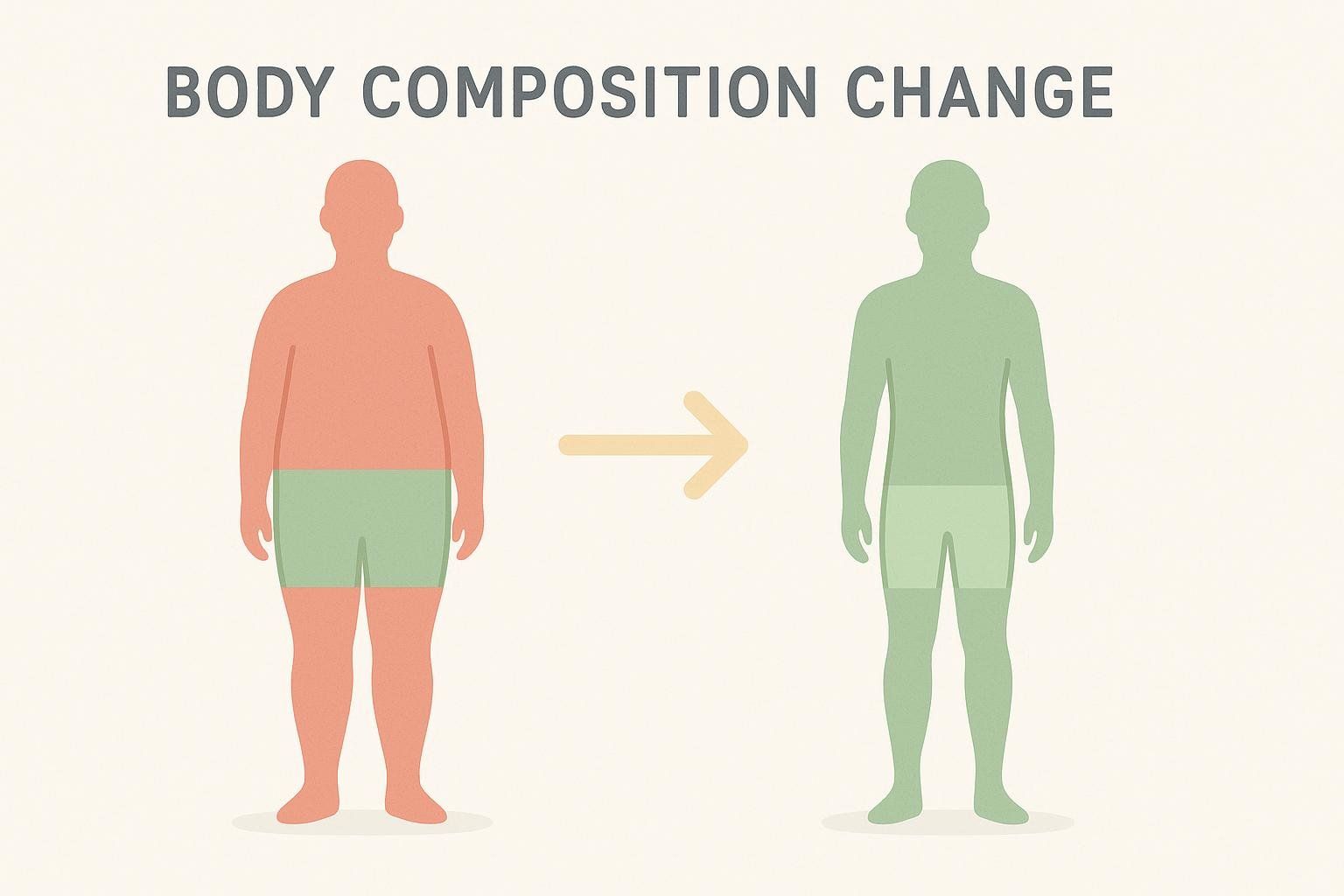
Common Mistakes and How to Avoid Them
Mistake: Thinking Low-Impact Means Low-Intensity
Many people dismiss low-impact exercise as "easy" or ineffective compared to high-impact alternatives. However, appropriately programmed low-impact exercise provides similar cardiovascular and metabolic benefits to high-impact exercise, research demonstrates.
Solution: Focus on intensity and consistency rather than impact level. Monitor your heart rate and perceived exertion to ensure adequate challenge.
Mistake: Ignoring Progressive Overload
Sticking to the same routine at the same intensity indefinitely without progression limits your results. Your body adapts to exercise stimuli, requiring progressive challenges to continue improving.
Solution: Gradually increase duration, intensity, or complexity every 1-2 weeks. Track your progress and systematically advance your program to maintain momentum.
Mistake: Cardio-Only Approach
Focusing exclusively on cardio without incorporating resistance training represents a missed opportunity, as combining cardio with strength training provides superior results for body composition, metabolic health, and functional fitness.
Solution: Include 2-3 strength training sessions per week alongside your low-impact cardio routine for optimal results.
Mistake: All-or-Nothing Mentality
Perfectionist thinking often leads to believing you need perfect consistency or intense workouts to see benefits. This mindset overlooks the reality that consistency matters more than perfection, and moderate exercise provides substantial health benefits.
Solution: Start where you are, focus on building habits, and remember that some movement is always better than none.
Mistake: Overtraining Without Recovery
Exercising every day without adequate recovery time can actually hinder progress, since recovery is when adaptation occurs, and overtraining can lead to plateaus and increased injury risk.
Solution: Include rest days or very light activity days in your weekly schedule. Listen to your body and adjust intensity based on how you feel.
Conclusion: Your Low-Impact Cardio Journey
Low-impact cardio isn't a consolation prize for those who "can't handle" high-impact exercise—it's a intelligent, sustainable approach to cardiovascular fitness that serves people across all fitness levels and life circumstances. From the apartment dweller worried about downstairs neighbors to the arthritis sufferer rediscovering movement joy, low-impact cardio offers a pathway to improved health without the punishing joint stress of traditional cardio.
The key takeaways:
- Low-impact doesn't mean low-intensity—you can achieve vigorous cardiovascular training without joint stress
- Consistency and progression matter more than exercise selection
- The best cardio routine is the one you'll actually maintain long-term
- Combining different types of low-impact cardio prevents boredom and ensures comprehensive fitness development
- Body composition monitoring provides a more complete picture of your progress than scale weight alone
Your next steps:
- Choose 2-3 low-impact cardio activities that appeal to you
- Start with short, manageable sessions (10-20 minutes)
- Focus on consistency over perfection
- Gradually progress duration and intensity
- Track your progress through multiple metrics (not just weight)
- Consider scheduling a DEXA scan to establish your baseline body composition and track changes over time
Remember, the most effective exercise program is the one you'll stick with consistently. Whether that means dancing in your living room, power walking through your neighborhood, or swimming laps at the local pool, your joints—and your future self—will thank you for choosing the sustainable path to cardiovascular health.
The journey to better health doesn't require you to pound the pavement until your knees scream for mercy. Sometimes the gentlest approach yields the most profound results.
